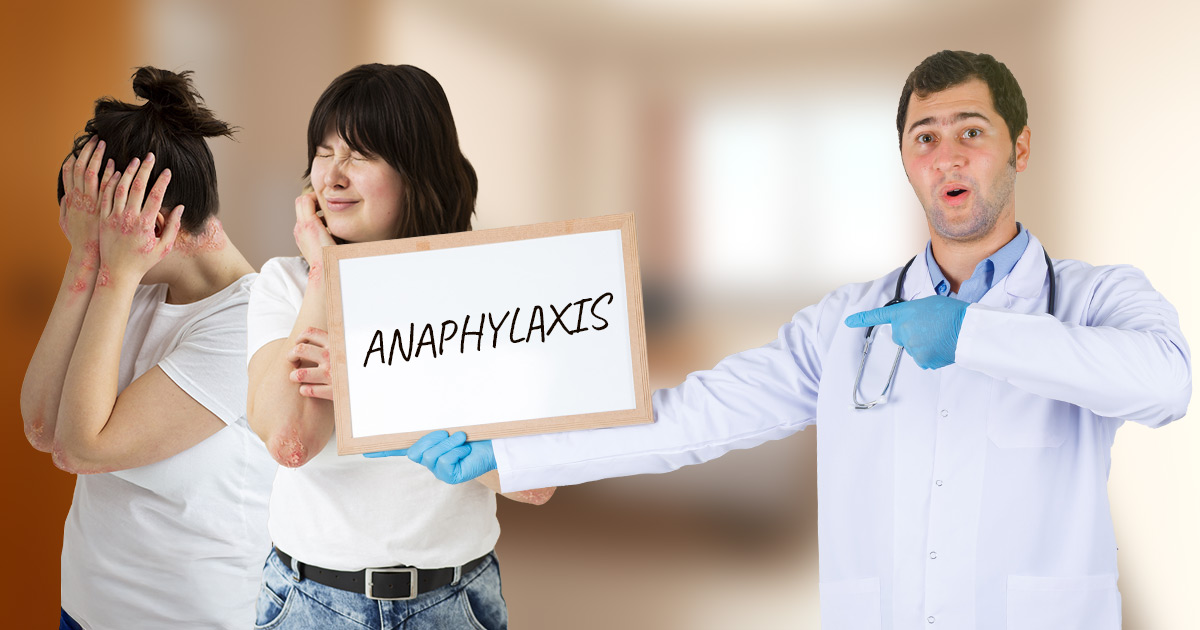Exercise-Induced Anaphylaxis Decoded: Signs, Triggers & How to Prevent

Most of us think of exercise as a healthy activity, but what if working out triggered a severe allergic reaction? That’s exactly what happens for people with exercise-induced anaphylaxis (EIA). This rare condition affects only a small number of people, but it can be life-threatening. Experts estimate that EIA occurs in 50 to 2,000 people out of every 100,000 each year. Pretty wild, right? Even more surprising, for some folks, it only happens when exercise is paired with specific foods they’ve eaten.
If you’d never heard of EIA before (or maybe you have and it just seems confusing), don’t worry. Here’s an easy breakdown of what it is, what causes it, and what you can do about it!
What Is Exercise-Induced Anaphylaxis?
EIA is a severe allergic reaction that happens when someone exercises. It doesn’t matter if it’s moderate or intense exercise—even activities like jogging, dancing, or walking can trigger symptoms. And here’s the tricky part: sometimes, this reaction only happens if you’ve eaten certain foods beforehand. That’s called food-dependent exercise-induced anaphylaxis (FDEIA). Foods like wheat, shellfish, peanuts, and tomatoes are some common troublemakers for people with FDEIA.
Picture this: you eat a peanut butter sandwich, then go out for a brisk walk. A little while in, you start to feel itchy, get hives, or even have trouble breathing. That’s EIA in action. It’s scary, but the good news is that with the right knowledge and preparation, you can stay safe while still staying active.
What Are the Symptoms and Triggers?
EIA symptoms don’t always look identical for everyone, but they typically show up within 30 minutes of starting exercise. That said, they can sometimes pop up hours later, too. Here are some of the most common symptoms people experience:
- Red, flushed skin or hives that spread across the body
- Intense itching
- Swelling, especially around the face, throat, hands, or feet
- Trouble breathing, like wheezing or a feeling of tightness in the chest
- Digestive issues, like nausea, cramping, diarrhea, or vomiting
- Feeling dizzy, lightheaded, or even fainting due to a drop in blood pressure
Here’s the thing about EIA triggers—it’s not just about exercise or food. Other factors like alcohol, medications (e.g., aspirin or ibuprofen), or exercising in extreme heat or cold can make a reaction more likely. And the combination of food plus exercise is what really makes food-dependent cases so tricky to manage.
What to Do in an Emergency
If someone shows signs of EIA, the first thing to do is stop what you’re doing immediately. Continuing to exercise will only make things worse. Next, an EpiPen (epinephrine auto-injector) can be life-saving, so use it right away if symptoms escalate. This tiny tool can prevent severe complications and buy time to get professional help.
But here’s the deal—even if symptoms seem to improve after using an EpiPen, you still need to call 911 or head to the hospital. Delayed reactions can occur, and having medical professionals monitor you is essential. They might give treatments like antihistamines, oxygen, or corticosteroids to help get everything under control.
After an episode, connecting with a doctor or allergist is crucial. They can help figure out what caused the reaction, suggest tests, and put an emergency action plan in place to keep you safe moving forward.
Staying Safe and Preventing EIA
You might think living with EIA means avoiding exercise altogether, but that’s not the case. The key is planning ahead and knowing your limits. Here are a few tips to prevent EIA or lower the risk of an episode.
1. Time Your Meals Smartly
Avoid eating 4–6 hours before exercising, especially if you know what your trigger foods are. Keeping a food and exercise diary is a handy way to track this.
2. Know Your Triggers
If you’ve had a reaction before, certain foods, medications, or environmental factors like extreme heat could be part of the puzzle. Take note, and avoid these triggers whenever possible.
3. Listen to Your Body
At the first sign of redness, hives, or fatigue during exercise, stop immediately. Early symptoms are your body’s way of warning you that something’s wrong.
4. Exercise Responsibly
Partner up whenever possible, and make sure your exercise buddy knows about your condition and how to use an EpiPen if needed.
5. Use Preventive Medications
Some people take antihistamines before exercising, but this isn’t for everyone. Always check with a doctor to see if this option might work for you.
Building an EIA prevention plan with a medical professional (like an allergist) can help make sure you stay active without unnecessary risks. For athletes, gradually resuming physical activity under supervision is often encouraged once an action plan is in place.
Turning Challenges Into Confidence With EIA
The idea of EIA might sound overwhelming, but it’s actually amazing how manageable it can be with the right tools and strategies. I’m always blown away by the resilience of people who take what could easily be a scary diagnosis and turn it into something they just work around. It’s inspiring!
Personally, if I had EIA, I’d stick to group workouts or find an exercise buddy. That way, I’d have someone who knows how to help in an emergency, plus it’s a little more fun than exercising solo. And honestly, I’d probably keep a stash of safe, easy-to-digest snacks on hand for post-workout refueling, just to avoid any unnecessary risks.
Exercise is such a great way to stay healthy and happy, and conditions like EIA shouldn’t have to take that away from anyone. With a few adjustments and a good support system, living (and exercising!) with EIA is absolutely possible.
